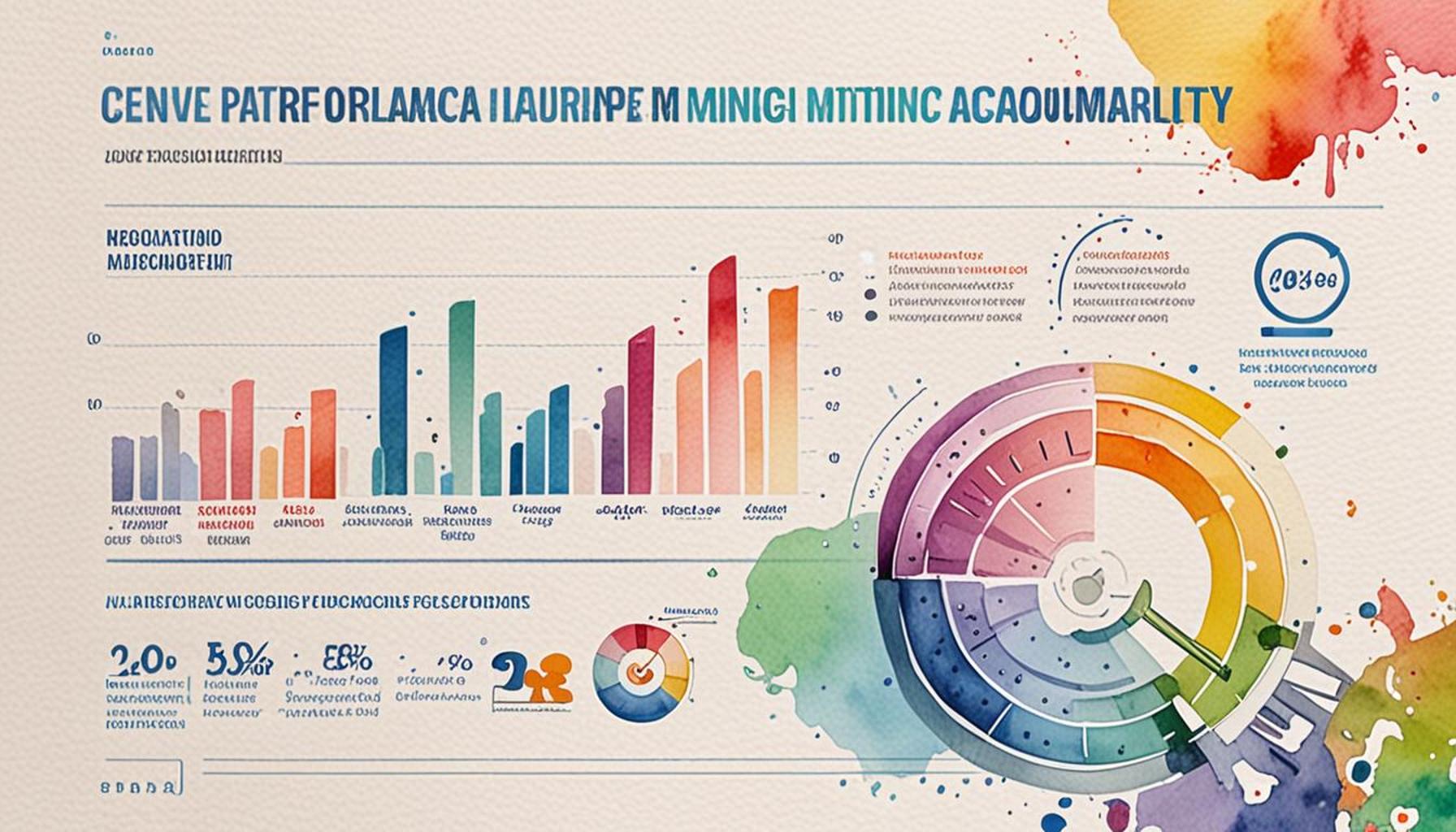The Importance of Digital Transparency in the Disclosure of Government Benefits

The Role of Digital Transparency in Government Benefits
Information is a powerful currency in today’s society, and digital transparency plays an integral role in how government benefits are perceived and utilized. With the rise of the internet and social media, citizens are more educated and demanding than ever regarding the allocation and management of public funds. This transparency is essential not only for fostering trust in government institutions but also for equipping individuals with the knowledge required to navigate complex benefit systems effectively.
One of the primary reasons digital transparency is important is accountability. When government agencies provide clear information about how benefits are distributed, they become more accountable for their actions. For example, the online tracking of stimulus payments during the COVID-19 pandemic allowed citizens to see when and where their tax dollars were being utilized, thus increasing public confidence in emergency measures taken by the government.
Moreover, accessibility is enhanced through various online platforms that simplify the understanding of eligibility criteria and application processes. The U.S. government websites have undertaken significant efforts to ensure that information about benefits is not only available but also easy to comprehend. Tools like interactive eligibility checkers help citizens quickly discern whether they qualify for specific assistance programs, eliminating unnecessary hurdles. This ease of access ensures that vital resources reach those who need them most.
Additionally, engagement with civic processes is deeply influenced by how transparent government operations are. When citizens have a clear view of where their taxpayer dollars are going, they are more inclined to discuss, debate, and participate in shaping local, state, and national policies. An informed electorate can lead to a more dynamic democracy where public opinion is valued and reflected in government decision-making.
The implementation of programs like the COVID-19 Economic Injury Disaster Loan (EIDL) provides a stark illustration of how vital clear guidelines and user-friendly access can be. Many small business owners turned to online platforms to seek financial assistance during the pandemic, demonstrating the need for straightforward navigation and transparency in government assistance options. As society faces new challenges, from economic disruptions to climate change, the demand for digital transparency will only continue to grow.
In conclusion, embracing digital transparency is no longer a choice but an imperative for effective modern governance. By ensuring that citizens are well-informed and engaged, governments can build a more trustworthy relationship with the public and create systems that are fair, efficient, and ultimately more responsive to the needs of the people they serve.
ADDITIONAL INSIGHTS: Expand your understanding here
Enhancing Public Trust Through Transparent Communication
In an era where misinformation can spread like wildfire, digital transparency serves as a critical antidote to distrust in government operations. Citizens are increasingly skeptical of bureaucratic complexities and fear that crucial benefits are either withheld or mishandled. To combat this skepticism, governmental entities must prioritize openness and clarity in their communication. By leveraging digital platforms effectively, they can not only inform but also reassure citizens regarding how government benefits are processed and awarded.
The relationship between digital transparency and public trust is evident in numerous case studies across the United States. For instance, research conducted by the American Public Opinion Index has shown that residents who feel well-informed about government programs are more likely to express confidence in their local and federal officials. This underscores the necessity for clear channels of communication that articulate not only the rules surrounding benefits but also the methodologies behind their distribution. Lack of transparency, on the other hand, can lead to skepticism, miscommunication, and, ultimately, disillusionment.
To illustrate the positive impact of digital transparency, let’s consider several key aspects:
- Clarity of Information: Accessible online resources outlining eligibility criteria and application steps reduce confusion among potential beneficiaries.
- User-Friendly Platforms: Websites that utilize intuitive designs and navigational aids empower users to find necessary details quickly, increasing overall participation in programs.
- Real-Time Updates: Providing timely updates about changes to policies or benefits ensures that citizens remain informed and can adjust their expectations accordingly.
For example, government agencies like the Social Security Administration (SSA) and the Department of Veterans Affairs (VA) have increasingly turned to online tools that allow users to manage their benefits seamlessly. Whether it’s tracking application statuses or accessing updates on new programs, these advancements exemplify how digital transparency can create a more engaged population. The ability to view their benefits in real time not only elevates user satisfaction but also fosters a sense of ownership among recipients.
Moreover, with the growing importance of social media platforms as information conduits, governments have an unprecedented opportunity to address public queries and concerns directly. Engaging with citizens on platforms where they are already active can enhance dialogue and enhance perceptions of accountability. While traditional channels, such as press releases and newsletters, remain essential, the integration of social media strategies can bridge gaps in understanding and build stronger relationships with constituents.
In conclusion, the case for digital transparency in the disclosure of government benefits is more compelling than ever. By adopting practices that enhance openness, government agencies can not only cultivate trust but also improve citizen engagement, ensure effective dissemination of critical information, and foster a more informed electorate. As technology continues to advance, the imperative for transparency will only grow stronger. The challenge now is for governments to meet these expectations head-on, ultimately striving for a society where each citizen is empowered by knowledge and informed participation in the democratic process.
| Advantage | Description |
|---|---|
| Accessibility | Digital platforms ensure that all citizens can easily access information about government benefits. |
| Trust Building | Transparency helps build trust between the government and citizens, fostering a more cooperative relationship. |
| Real-Time Updates | Digital transparency provides real-time updates, keeping citizens informed about any changes to benefit programs. |
| Empowerment | Access to comprehensive benefit data empowers individuals to make informed choices regarding their rights. |
The intersection of digital transparency and government benefits is increasingly critical in today’s digital age. Governments leveraging technology can permit citizens to navigate benefits more effectively and with greater comprehension. For instance, accessibility ensures that crucial information reaches marginalized communities, thereby reducing the digital divide. Moreover, fostering trust through open channels of communication not only increases civic engagement but also promotes a culture of accountability. When citizens can swiftly adjust to changes in the benefit landscape thanks to real-time updates, they are less likely to miss out on essential assistance programs. This empowerment encapsulates a broader goal: as citizens familiarize themselves with their entitlements, government resources become less obscure and more of a reliable support system, enhancing overall societal welfare.
ADDITIONAL INSIGHTS: Expand your understanding here
Empowering Citizens Through Accessible Data
As the digital landscape continues to evolve, the role of data accessibility in governmental operations cannot be overstated. Citizens are increasingly seeking information that facilitates their understanding of government benefits, requiring agencies to go beyond mere announcements and actively provide comprehensive data sets. This approach not only caters to the information-hungry populace but also enhances transparency by allowing citizens to independently verify and analyze information regarding public services.
The implementation of open data initiatives by various government agencies is a noteworthy trend in this regard. For instance, many states have adopted policies that open up their data collections, allowing the public to access information regarding benefit programs such as food assistance, unemployment benefits, and educational grants. According to the Open Data Portal project, over 150 federal agencies currently participate in sharing datasets that detail eligibility criteria, funding allocations, and application outcomes. This wealth of information empowers citizens, enabling them to make informed decisions about their participation in these programs.
Furthermore, the integration of interactive tools can enhance user experience and understanding. For example, calculating potential benefits through online calculators or utilizing chatbots for real-time inquiries can streamline the application process and demystify government programs. The state of California has made significant strides in this domain by implementing a digital platform where residents can receive tailored information based on their circumstances. Such innovations not only align with the principles of digital transparency but also promote higher participation rates among underrepresented communities.
Moreover, the importance of data visualization cannot be overlooked. Effective data representation facilitates comprehension by illustrating complex information in an digestible format. Graphs, charts, and infographics can simplify eligibility requirements, making it easier for citizens to navigate through often complicated guidelines. For instance, the U.S. Department of Agriculture employs graphical data formats to elucidate the various components of the Supplemental Nutrition Assistance Program (SNAP), which has helped to raise awareness and understanding of this crucial benefit.
Another compelling reason for governments to embrace digital transparency is the potential for fostering civic engagement. When citizens engage with open data, they become more adept at participating in discussions around public policy and governance. This sense of empowerment can lead to active community involvement, where residents advocate for adjustments to programs based on their firsthand experiences. Projects such as the Participatory Budgeting initiative, which allocates a portion of public funds based on community votes, illustrate how transparency can encourage citizen engagement and amplify public voices in policy-making.
Additionally, challenges such as data security and privacy concerns must be addressed in the pursuit of transparency. While it is important for governments to be forthcoming with information, they must balance transparency with the responsibility of safeguarding personal data. Implementing secure platforms for data sharing will maintain citizens’ trust while ensuring that sensitive information remains protected.
Ultimately, the push for digital transparency in government benefit dissemination is not merely a checkbox on a compliance list; it is evolving into a cornerstone of effective governance. By prioritizing data accessibility, interactive tools, and user-focused design, government agencies can break down barriers between themselves and the communities they serve, enhancing both trust and engagement within the democratic process.
YOU MAY ALSO LIKE: Read read another article
Conclusion: Building a Transparent Future for Government Benefits
As we increasingly navigate an era defined by rapid digital advancements, the importance of digital transparency in the disclosure of government benefits emerges as a critical component of effective governance. The transformative potential of open data initiatives and online accessibility is enhancing citizens’ ability to engage with their government actively. When the public can access detailed information about benefits, eligibility requirements, and application processes, they are better equipped to make informed decisions that directly impact their lives.
Moreover, the integration of interactive technologies and data visualization fosters wider participation and comprehension, enabling citizens to navigate complex systems with ease. As demonstrated by successful models in states like California, modern platforms can tailor information to individual needs, breaking down barriers that often deter participation among underserved populations. This empowerment not only fosters greater inclusion but also encourages civic engagement, allowing citizens to play a pivotal role in shaping policies that affect their communities.
However, it is essential to strike a balance between transparency and the safeguarding of personal data. Governments must cultivate trust by ensuring robust data security measures while maintaining openness. As this balance is achieved, the dialogue between citizens and their governments will flourish, cultivating a participatory democracy where everyone’s voice contributes to the policy-making process.
In conclusion, advocating for digital transparency is more than a regulatory requirement; it is fundamental to a responsive and accountable government. As technology continues to evolve, so too should the commitment to transparency, ensuring that every citizen has the tools and information necessary to stay informed, engaged, and empowered in their relationship with government services.


